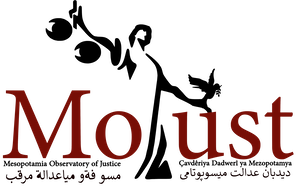« What happened was a terrible tragedy, but it wasn’t intentional »
« …to suppress the mountain people and to obliterate disobedient. »
How many times have we listened these sayings taken from the cliche-box of the genocide denial? So
were they used also to talk apologetically about the Circassian genocide.
The indigenous peoples of Circassia; Circassians, mainly Adyghe, Ubykhs, Abkhazs, Ingush, Arshtins,
Chechens, Ossetians were ethnically cleansed from their homeland by Tsarist Russian Autocracy. The
ethnic cleansing and deportation were launched in 1864 and it was mostly completed by 1867.
The ‘unintentional’ obliteration of a ‘disobedient’ population resulted in mass murder of hundreds of
thousand civilians, burning of the villages of survived to ashes, destruction of food reserves and crops
and expulsion of the remaining population.
The collective punishment activities that took place in Circassia were scheduled, pre-planned military
actions led by the Russian autocracy. At the beginning, this kind of approach was officially expressed by
tsar Nikolay I, who wrote to General I. P. Paskevich (the Russia’s special representative in the Caucasus,
the Special Caucasian Corps Commander): “Thus, having accomplished the nice work, the new
assignment is ahead of you, in my opinion glorious as well, and in terms of its direct benefits much more
important – to suppress forever the mountain people and to obliterate disobedient”.
Emperor Alexander’s Minister of War, Dmitri Milyutin, executed the plan to expel the Circassians to the
Ottoman Empire. According to Milyutin, the removal of the Circassians would open up farmland for
Christian settlers and “cleanse the land of hostile elements.”
According to the official russian documents more than 400,000 Circassians were killed, 497,000 were
forced to flee abroad to Anatolia and only 80,000 were left alive in their native area. Actually only 10% of
Circassians could stay in their historic homeland, the rest 90 % of the people are distributed in the rest of
the world in the following manner: Turkey – 5 000 000, Germany – 100 000, Jordan – 100 000, Syria –
100 000, France – 15 000, the USA – 5 000, Israel -5 000 and the Netherlands – 3000.
The Russian commanders conducted the majority of their ethnic cleansing of Circassia between October
1863 and April 1864. Numerous massacres of unarmed men, women and children were conducted. Those
who were not massacred were driven to the Black Sea coast in convoys. The Russian military refused to
allow them to take provisions. Many fled to die in the Caucasian mountains, and unknown thousands
died en route to the shore. Once the survivors arrived in Anatolia they continued to die of disease,
starvation and exposure to plunder.
Mojust considers the description of genocide is fully appropriate, considering the mass massacre and
deportation of Circassians in 1864 as one of the first examples of modern forced social engineering.
Since the “genocidal intent” applies to acts of destruction that are not the specific goal but are predictable
outcomes or by- products of a policy, which could have been avoided by a change in that policy.
Mojust considers the annihilation of more than one million Circassians in the second half of 19
th
century to have been genocide on the grounds that the following demographic transformation of
Circassia to a predominantly ethnically russian region was a plan conducted by the russian authorities;
that the Russian commanders were fully aware of the huge number of deaths by starvation; that their
methods in the war and the expulsion would bring physical destruction of hundred of thousands as it was
the criteria in recognizing the Armenian Genocide.
Mojust is fully aware of the precepts of the “real politics” and geostrategical considerations in regard to
the recognition of a genocide in today’s world politics. Our foundation however stands firmly on the
principle according to which even if the recognition of genocide can either be a matter political balances
of power or can be instrumentalized for diplomatic purposes, the criteria of the international law and the
non-official history of the peoples
[1]should remain the determining grounds of analysis.
Mojust joins on those who encourage facing the truth of Circassian genocide because as one eminent
circassian historian, Ashkad Chirg reminds we can not build friendship between the nations with lies.
* Tsitsekun means mass massacre in Ubykh vocabulary.
[1]
– Some soviet historians had the courage to get off the beaten track of official history stating that “during almost
100 years (from the end of 70s of the XVIII cent. till 1864), the mountain auls, bread and hay were systematically
devastated and burnt by Tsar Troops and Cossacks, kettle was stolen, women, children and aged were enslaved.
Peaceful population was mercilessly exterminated, the blood flew like water” (Pisarev V.I. Methods of conquest of
Adygian people by Tsarism in the first half of the XIX cent.//Historical notes. Moscow, 1940. Vol. 9. page 155).


